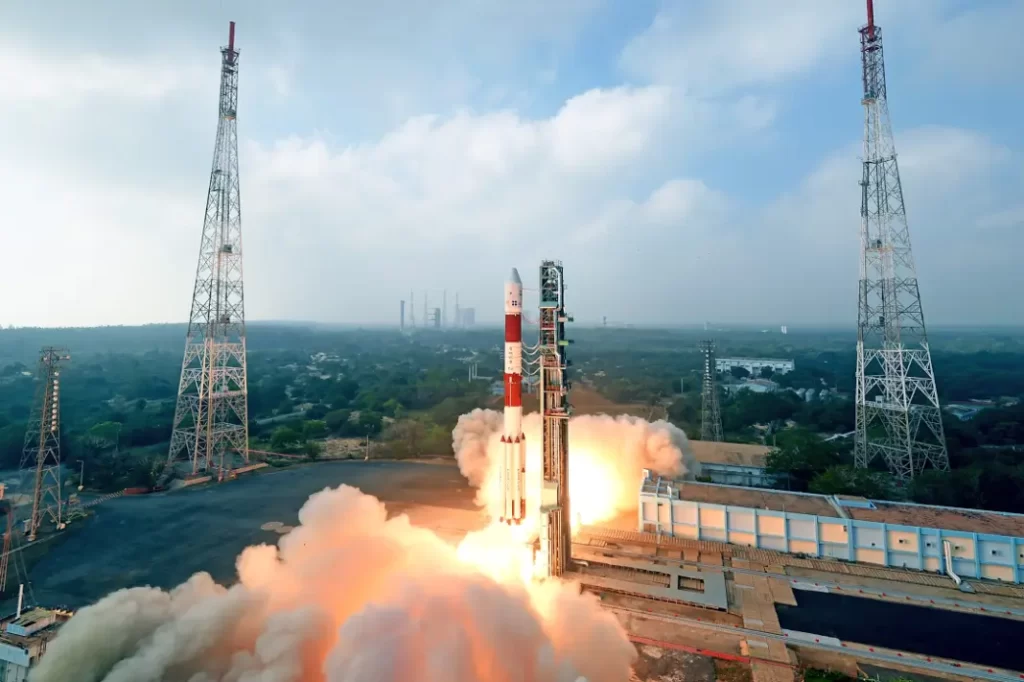ISRO cryogenic engine : ISRO Successfully Tests Cryogenic Engine of Its Rocket for the Moon Mission
The Indian Space Research Organisation (ISRO) has successfully conducted a full-duration test fire of the cryogenic engine for its Geosynchronous Satellite Launch Vehicle-F10 (GSLV-F10) rocket. The test was conducted on 16th April 2023 at the ISRO Propulsion Complex (IPRC) in Mahendragiri, Tamil Nadu. The cryogenic stage is an important component of the rocket, and the test is a crucial step towards the successful launch of India’s first-ever manned moon mission, Gaganyaan.
The cryogenic engine uses liquid hydrogen and liquid oxygen as propellants and provides higher thrust to the rocket, enabling it to carry heavier payloads. The successful test of the cryogenic engine is a significant achievement for ISRO, as only a handful of countries possess the technology to develop and use cryogenic engines.
The GSLV-F10 rocket, which will use the cryogenic engine, is set to launch the Gaganyaan mission in 2024. The mission aims to send three Indian astronauts to space for a period of five to seven days. The astronauts will be selected from the Indian Air Force and trained in Russia.
The successful test of the cryogenic engine is a significant milestone for India’s space program and a major step towards achieving its goal of becoming a space power. It also enhances India’s capability to launch heavier payloads and undertake more complex space missions in the future.
Why this News is important:
The Indian Space Research Organisation (ISRO) has successfully conducted a full-duration test fire of the cryogenic engine for its Geosynchronous Satellite Launch Vehicle-F10 (GSLV-F10) rocket. The successful test of the cryogenic engine is a significant achievement for ISRO, as only a handful of countries possess the technology to develop and use cryogenic engines.
The cryogenic engine uses liquid hydrogen and liquid oxygen as propellants and provides higher thrust to the rocket, enabling it to carry heavier payloads. The successful test of the cryogenic engine is a crucial step towards the successful launch of India’s first-ever manned moon mission, Gaganyaan, which is set to launch in 2024.
The Gaganyaan mission aims to send three Indian astronauts to space for a period of five to seven days. The successful test of the cryogenic engine enhances India’s capability to launch heavier payloads and undertake more complex space missions in the future. This achievement is a significant milestone for India’s space program and a major step towards achieving its goal of becoming a space power.
Historical Context:
The Indian Space Research Organisation (ISRO) was founded in 1969 with the goal of developing space technology and harnessing it for national development. Since then, ISRO has achieved many milestones, including launching satellites for communication, remote sensing, and navigation, as well as conducting successful interplanetary missions.
ISRO’s first successful satellite launch was the Aryabhata satellite in 1975, followed by the Rohini satellite in 1983, which made India the 8th country in the world to have its own satellite in space. In 2008, ISRO launched the Chandrayaan-1 mission, India’s first unmanned lunar mission, which discovered evidence of water on the moon.
ISRO’s successful test of the cryogenic engine for the GSLV-F10 rocket for its moon mission is another significant milestone for India’s space program. The development of cryogenic engines has been a long-standing challenge for ISRO, and it was only in 2014 that the organization achieved its first successful launch of a rocket with an indigenous cryogenic engine.
Since then, ISRO has been working towards developing cryogenic engines for heavier rockets to launch more complex missions, including the Gaganyaan mission. The successful test of the cryogenic engine for the GSLV-F10 rocket is a crucial step towards achieving this goal.
The cryogenic engine is also an important component for India’s future space missions. It provides higher thrust to the rocket, enabling it to carry heavier payloads, which is essential for space missions that require larger and more complex equipment.
ISRO’s success in developing cryogenic engines also enhances India’s space diplomacy efforts. India has been working closely with other countries, including the United States, Russia, and France, to develop and launch its space missions. The successful test of the cryogenic engine is a demonstration of India’s growing capabilities in space technology and could lead to more collaborations with other countries in the future.

Key Takeaways from “ISRO Successfully Tests Cryogenic Engine of Its Rocket for the Moon Mission”
| Serial Number | Key Takeaway |
|---|---|
| 1. | ISRO has successfully conducted a full-duration test fire of the cryogenic engine for its Geosynchronous Satellite Launch Vehicle-F10 (GSLV-F10) rocket. |
| 2. | The successful test of the cryogenic engine is a crucial step towards the successful launch of India’s first-ever manned moon mission, Gaganyaan, which is set to launch in 2024. |
| 3. | The cryogenic engine uses liquid hydrogen and liquid oxygen as propellants and provides higher thrust to the rocket, enabling it to carry heavier payloads. |
| 4. | The successful test of the cryogenic engine enhances India’s capability to launch heavier payloads and undertake more complex space missions in the future. |
| 5. | ISRO’s success in developing cryogenic engines also enhances India’s space diplomacy efforts and could lead to more collaborations with other countries in the future. |
In conclusion, ISRO’s successful test of the cryogenic engine for the GSLV-F10 rocket is a significant milestone for India’s space program and a major step towards achieving its goal of becoming a space power. The successful development and use of cryogenic engines enhance India’s capability to launch heavier payloads and undertake more complex space missions in the future, making it an important news story for students preparing for government exams, including those for civil service positions like PSCS to IAS.
Important FAQs for Students from this News
What is a cryogenic engine?
A: A cryogenic engine is a rocket engine that uses cryogenic fuel and oxidizer to provide higher thrust to the rocket.
Q: Why is the successful test of the cryogenic engine important for ISRO?
A: The successful test of the cryogenic engine is important for ISRO as it enhances its capability to launch heavier payloads and undertake more complex space missions in the future.
Q: What is the Gaganyaan mission?
A: The Gaganyaan mission is India’s first-ever manned moon mission, which is set to launch in 2024.
Q: What propellants are used in the cryogenic engine?
A: The cryogenic engine uses liquid hydrogen and liquid oxygen as propellants.
Q: How does the successful development of cryogenic engines enhance India’s space diplomacy efforts?
A: The successful development of cryogenic engines enhances India’s capability to launch more complex space missions, making it an attractive partner for other countries in space diplomacy efforts.
Some Important Current Affairs Links















